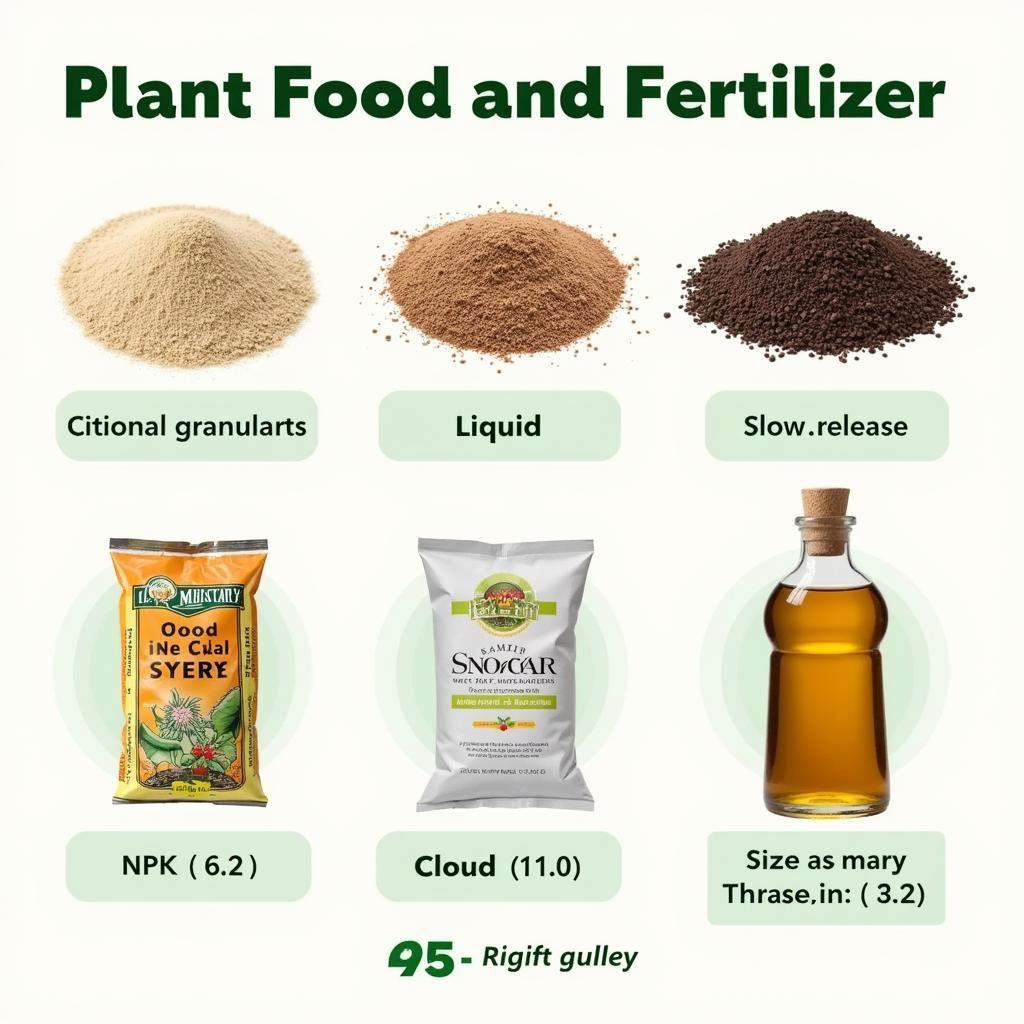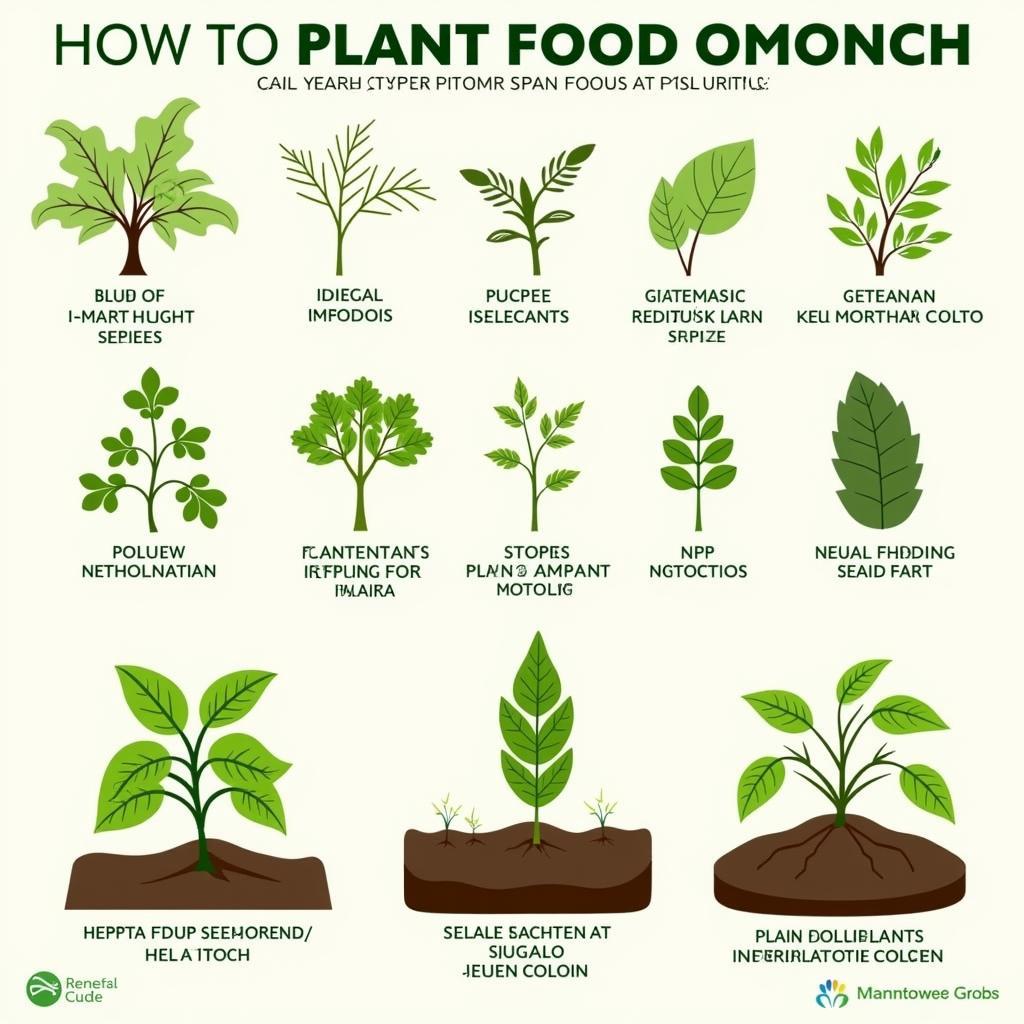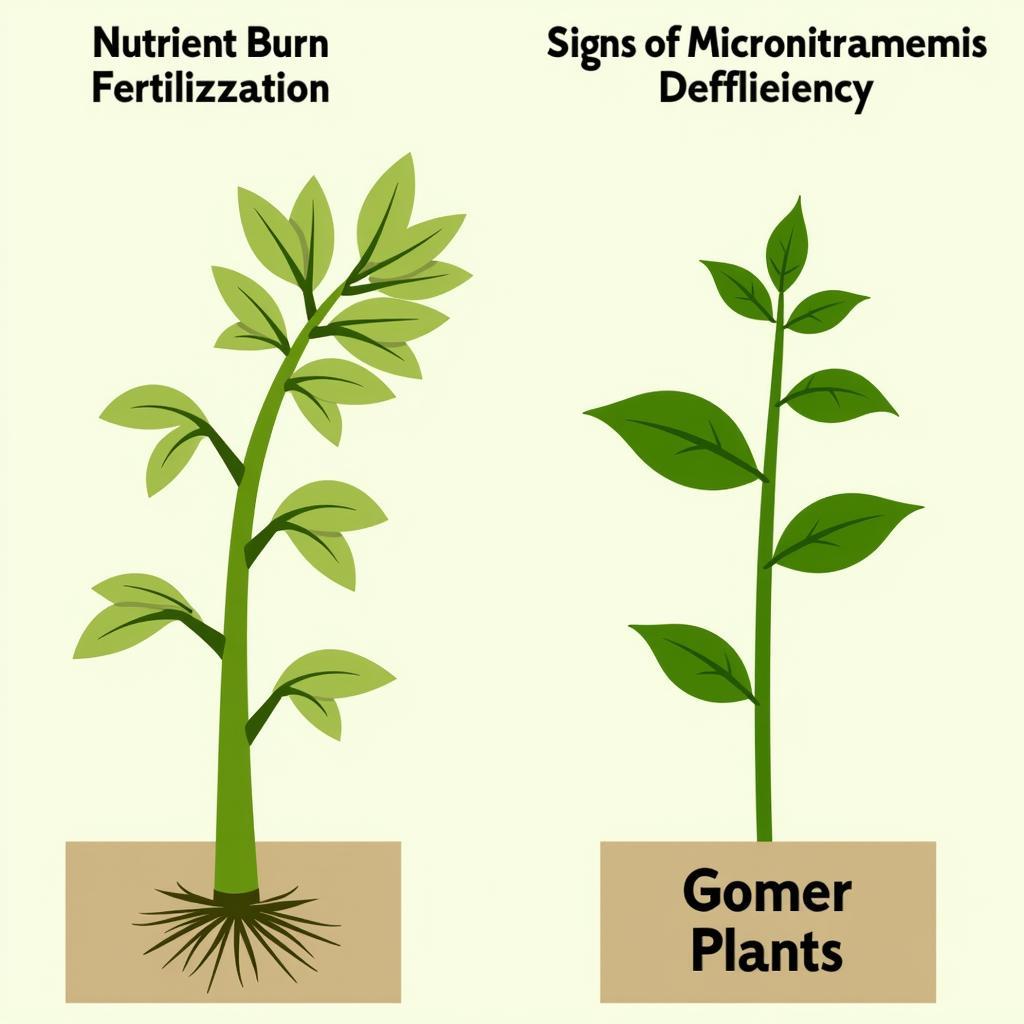Is Plant Food Fertilizer? This is a question many gardeners, both novice and experienced, often ponder. While the terms are often used interchangeably, understanding the subtle differences can significantly impact the health and productivity of your plants. Let’s delve into the world of plant nutrition and explore the relationship between plant food and fertilizer.  Comparing Plant Food and Fertilizer
Comparing Plant Food and Fertilizer
Understanding the Basics: What Plants Need to Thrive
Just like humans, plants require essential nutrients for growth and development. These nutrients are broadly classified as macronutrients and micronutrients. Macronutrients, needed in larger quantities, include nitrogen (N), phosphorus (P), and potassium (K). These are often represented as the NPK ratio on fertilizer packaging. Micronutrients, needed in smaller amounts, include elements like iron, manganese, and zinc. A balanced supply of these nutrients is crucial for healthy plant growth. Providing the right “food” ensures strong roots, vibrant foliage, and abundant yields.
Macronutrients: The Building Blocks of Plant Life
Nitrogen promotes leafy green growth, phosphorus contributes to root development and flowering, and potassium enhances overall plant health and disease resistance. Deficiencies in any of these macronutrients can lead to stunted growth, yellowing leaves, and poor fruit production. plant-food-for-garden provides a great starting point for understanding the basics of plant nutrition.
Micronutrients: The Unsung Heroes
While needed in smaller quantities, micronutrients play vital roles in various plant processes, including enzyme activity and chlorophyll production. Deficiencies in micronutrients can manifest as specific symptoms, such as interveinal chlorosis or stunted growth.
Is Plant Food the Same as Fertilizer?
The terms “plant food” and “fertilizer” are often used interchangeably, leading to confusion. While both provide nutrients to plants, there’s a subtle difference. “Fertilizer” generally refers to products containing concentrated amounts of macronutrients (N, P, and K), often derived from synthetic sources. “Plant food,” on the other hand, can encompass a broader range of products, including fertilizers, soil amendments, and other nutrient-rich substances. Thinking of it this way, all fertilizers are plant food, but not all plant food is fertilizer.
Decoding Fertilizer Labels: NPK and Beyond
Understanding the NPK ratio on fertilizer labels is crucial for providing your plants with the right balance of nutrients. For example, a 10-10-10 fertilizer contains equal parts nitrogen, phosphorus, and potassium. Choosing the right NPK ratio depends on the type of plant and its specific needs.
Choosing the Right Plant Food: Factors to Consider
Selecting the appropriate plant food depends on various factors, including plant type, soil conditions, and growing environment.  Selecting appropriate plant food for different plant types.
Selecting appropriate plant food for different plant types.
Soil Testing: The Key to Precision Nutrition
Soil testing is crucial for determining the existing nutrient levels in your soil. This information helps you tailor your plant food choices to address any deficiencies and optimize plant nutrition.
Types of Plant Food: From Granular to Liquid
Plant food comes in various forms, including granular, liquid, and slow-release. Each type has its advantages and disadvantages, and the best choice depends on your specific needs and preferences. banding-food can offer a more targeted approach to nutrient delivery.
Organic vs. Synthetic Plant Food: Making Informed Choices
The debate between organic and synthetic plant food continues. Organic options are derived from natural sources and promote soil health, while synthetic fertilizers offer a more concentrated and readily available source of nutrients. winter-wheat-food-plot illustrates the benefits of incorporating organic practices in gardening.
“Understanding the specific nutritional requirements of your plants is paramount. A balanced approach is key, whether you choose organic or synthetic options,” advises Dr. Emily Carter, a renowned horticulturalist.
Benefits of Using Plant Food: Beyond Growth
Using plant food offers numerous benefits, including increased yields, improved disease resistance, and enhanced overall plant vigor.
“Investing in quality plant food is an investment in the long-term health and productivity of your garden,” adds Dr. Carter.
Common Plant Food Mistakes to Avoid
Over-fertilizing is a common mistake that can harm plants. food-plot-seeder-for-sale can help achieve even distribution and prevent over-application. Another common error is neglecting micronutrients, which are essential for various plant processes.  Avoiding over-fertilizing and other common mistakes.
Avoiding over-fertilizing and other common mistakes.
Conclusion: Nourishing Your Plants for Optimal Growth
Is plant food fertilizer? While the terms are closely related, understanding the nuances can help you make informed decisions about plant nutrition. By choosing the right plant food, you can ensure your plants receive the necessary nutrients for healthy growth and abundant yields. Remember to consider factors like plant type, soil conditions, and your gardening philosophy when selecting the best option for your garden. turnip-food-plot-seed can be a great addition to your garden and understanding its specific needs is crucial.
FAQ
- What is the difference between plant food and fertilizer?
- How do I choose the right NPK ratio for my plants?
- What are the benefits of soil testing?
- What are the different types of plant food available?
- What are the advantages and disadvantages of organic vs. synthetic plant food?
- How can I avoid over-fertilizing my plants?
- What are the signs of nutrient deficiencies in plants?
For any assistance, please contact us at Phone Number: 02437655121, Email: [email protected] Or visit us at: 3PGH+8R9, ĐT70A, thôn Trung, Bắc Từ Liêm, Hà Nội, Việt Nam. We have a 24/7 customer support team.